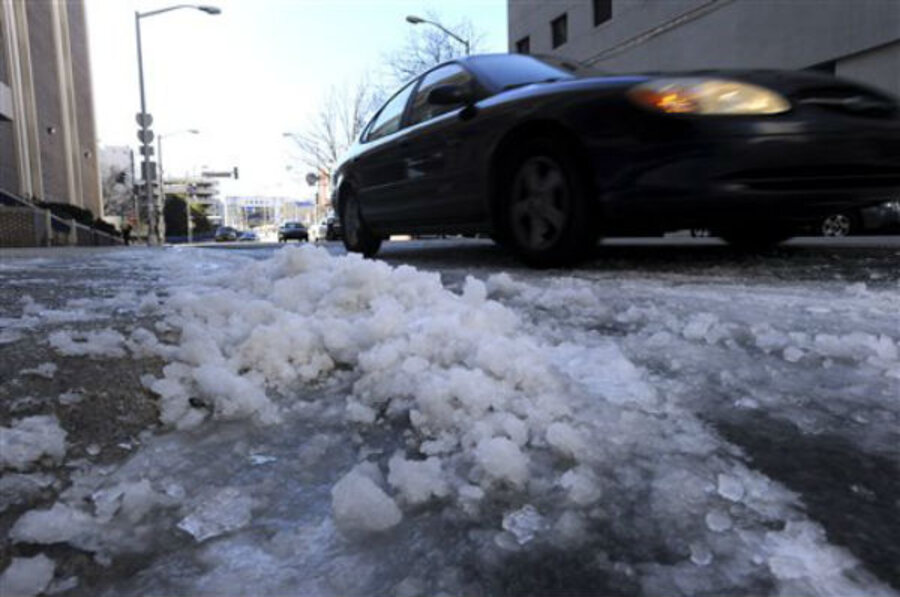Polar vortex invades South, spiking energy use but sparing citrus growers
Many Southerners are fishing through the backs of their closets for woolies and anything with down, as the deep freeze that has gripped the northern United States dips well below the Mason-Dixon line, bringing record-breaking cold to some parts of the region.
Sections of West Virginia saw the lowest temperatures in 25 years, while in Virginia temperatures broke records set in the 1950s.
Unlike folks in the often-frigid North, people in the South are not accustomed – and not typically equipped – to weather such a chill.
The cold weather is putting stress on the electricity grid in states where a large share of residents rely on electric heat. The Tennessee Valley Authority, one of the South’s largest public utilities, said electricity demand Tuesday morning reached the second-highest winter peak since the 1920s. Some Tennessee residents lost power intermittently during the night. A large utility in South Carolina implemented 15-minute rolling blackouts to address demand.
Officials in states across the South have been urging residents to stock their cars with blankets and additional clothes in the event they become stranded on the road. AAA, the roadside assistance service, reported an increase in calls from stranded motorists in Virginia Tuesday morning.
While relatively few Americans are being spared the deep freeze, homeless individuals often bear the brunt of extreme temperatures. Prolonged exposure to cold can be deadly, and the body of a homeless man was discovered Monday night in a vacant lot in Columbus, Ga. The man apparently succumbed to hypothermia.
Charitable organizations have been working overtime to ensure that homeless residents have a warm place to go.
The temperature in Louisville, Ky., dropped to 4 degrees below zero Monday night and has been hovering in the low teens Tuesday, prompting the Salvation Army to open its white flag shelter, a designated room for individuals to warm up. While the Salvation Army frequently opens the white flag shelter during extreme hot and cold weather, this week's exceptionally frigid temps prompted it to expand capacity from 40 to 60 individuals, says David Yarmouth, director of community relations. The room offers few amenities beyond running water, some chairs, and a restroom, but is valuable for those with nowhere else to go. Typically, people staying in emergency homeless shelters must leave by 7 a.m.
Tennessee residents have been hunkering down as bitter cold and sub-zero wind chills have forced schools, senior centers, and even Goodwill donation trailers to close. The city of Nashville set up special hot lines to help direct to shelter those who have nowhere else to go.
In Florida, the $9 billion-a-year citrus industry just barely skated through this particular cold snap. Citrus growers are always on edge this time of year, a spokesman for Florida Citrus Mutual says. If temperatures linger at 28 degrees F. or below for four hours or more, the entire crop could be ruined. While temperatures in some areas of the state dipped into the upper 20s Monday night, they did not last long enough to compromise the crop.
Temperatures are expected to remain in the teens and 20s across the South. But the trend will be toward warming, the National Weather Service says. Many states will start to see warmer temperatures Wednesday, with the mercury climbing into the 30s in Kentucky and the 50s in Virginia.
Material from the Associated Press was used in this report.






